If you’re looking to generate traffic fast, then having a solid SEM strategy is key. In this guide, you’ll learn all about SEM marketing, what it is, and how to do it effectively. You’ll learn the foundational steps to understanding your customers and mapping out an SEM funnel. You’ll also learn how Google ranks ads and how to ensure your ads appear at the top of the SERPs.
But first, let’s talk about what SEM marketing actually is.
What is SEM Marketing? A Definition
SEM marketing, which stands for “search engine marketing,” refers to the paid listings on search engines, typically set up through the Google Ads platform.
Historically, it used to incorporate the practice of search engine marketing, or SEO. Nowadays, however, the two have been broken into two disciplines. The SEM process usually goes as follows:
- Marketers choose keywords to bid on
- Ads are created to attract the searchers for these keywords
- This traffic is directed to dedicated landing pages
- Traffic is converted into leads or customers
- Marketers measure key metrics and optimize performance
SEM marketing is one of the most effective ways of growing a business. When done right, it can be a fast method of generating traffic, measuring performance for fast insights and getting new customers.
With the definition of SEM set out, let’s look at how to set up an effective SEM campaign using the Google Ads platform. It all starts with a key understanding of your customers and the buying process.
1. The SEM Marketing Funnel
People buy products and services because it fulfils a need or solves a problem they have. Therefore, the first step to building an SEM marketing funnel is to understand the buying process.
The typical buying process looks something like this:
- A problem or need is identified
- The consumer searches for solutions and offers
- These brands/offers are then compared to each other
- The consumer takes action by investing or buying the product or service they feel is a best fit
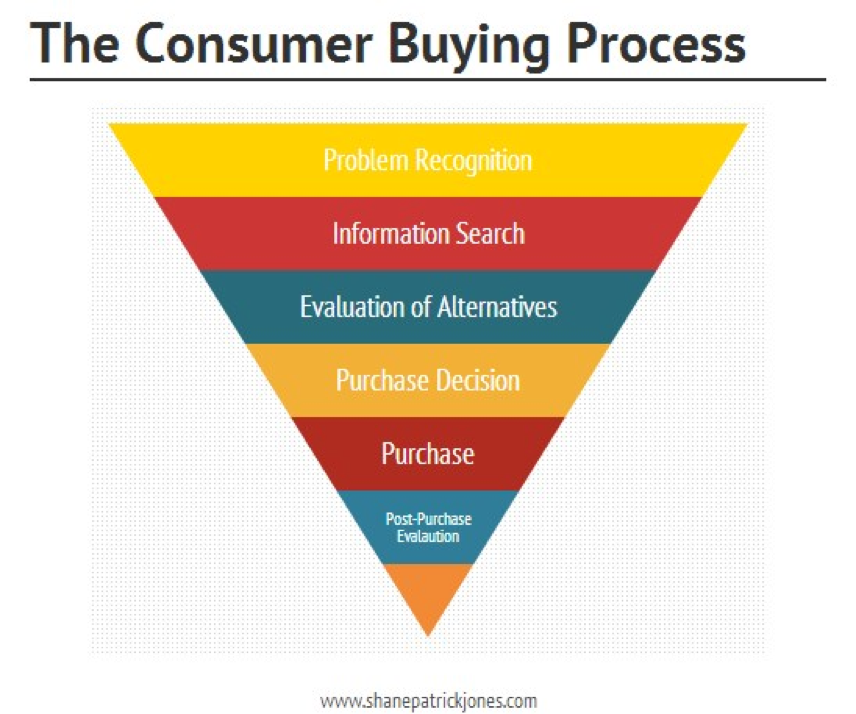
The most effective SEM marketing funnels are built with each of these steps in mind. Furthermore, they understand that not all customers have the same needs and motivations.
Therefore, it’s important to group each customer into different segments. With customer segments defined, you can craft messaging that addresses their needs at all stages of the buying process.
With this in mind, it’s time to build the funnel. This is typically made up of the following steps:
- Customer personas: The needs of each customer segment must be clearly defined. You can do this through the use of consumer insights, as well as post-purchase surveys and even customer interviews.
- Map each funnel stage: What happens at each stage of the buying process? For example, will someone start by reading reviews and comparison charts, or read a blog post to better understand their problem?
- Keyword research: Which keywords align with each stage of the funnel? This means understanding keyword intent. For example, “how to increase search rankings” is informational, while “seo software” has high commercial intent.
- Build marketing assets: With keyword research at hand, it’s time to build your marketing assets. This includes your ad copy, eBooks/whitepapers, offers and the landing pages that will convert searchers into leads or customers.
For further reading on keyword research, check out our article “How to Select the Right Keywords for Your PPC Campaign.”
2. How Ads Get Ranked
Now you have your SEM funnel mapped out, you’ll need to build your campaign. But first, it’s important to understand how exactly ads get ranked on the SERPs.
Google Ads uses a metric known as Quality Score to measure who ranks where on the SERPs. Not only that, it also determines the CPC for each ad.
Why does this matter? Well, the higher your Quality Score, the more likely it is you’ll rank higher on the SERPs. Not only that, but you may actually pay less per click than the competition (even if they rank lower than you).
Quality Score is made up of the following factors:
- The click-through-rate of your ad
- The relevance of your target keyword and ad copy
- The relevance of each keyword and the ad group
- The quality of your landing page (and relevancy to keyword + ad)
- Your Google Ads account performance
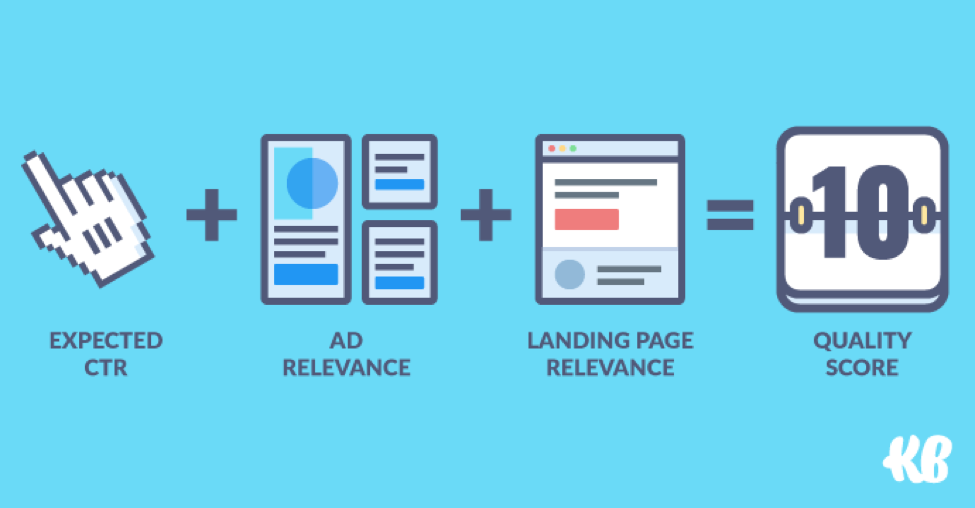
It’s been proven time-and-time again that there’s a direct correlation between Quality Score and PPC performance. As a result, a higher Quality Score also means a lower cost-per-conversion (CPA), as your ROI will increase as a result of the decreasing CPC.
3. The Importance of Google Ads Account Structure
Before we dive into practical methods of improving your Quality Score, it’s important to understand how ad structure affects the performance of your SEM campaigns.
In Google Ads, account structure can be illustrated like this:
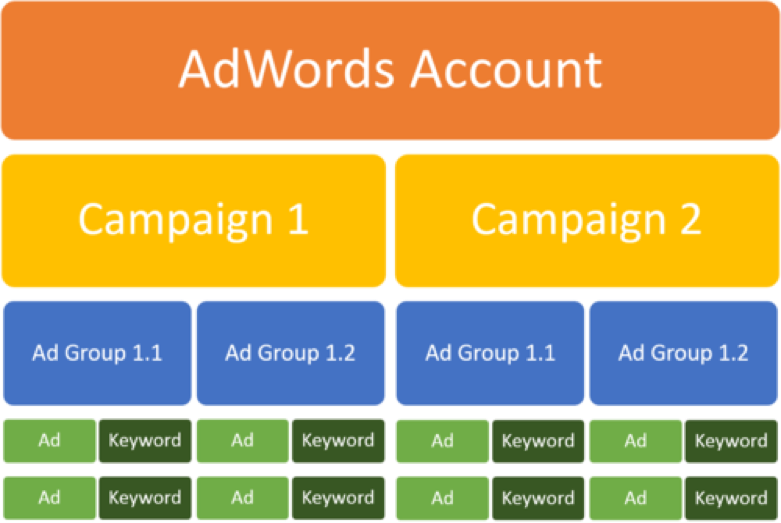
Each campaign contains several ad groups relevant to the topic/category of that campaign. Then, each ad group contains target keywords and the ads that will appear for users searching for those keywords.
With your target keywords at hand, the next step is to group them into relevant campaign and ad groups. For example, let’s say you run an eCommerce footwear brand. Your campaign structure might look something like this:
- Men’s shoes
- Women’s shoes
- Children’s shoes
Then, under men’s shoes, you’d have the following ad groups:
- Men’s boots
- Men’s running shoes
- Men’s sneakers
- Men’s formal shoes
And so on. From here, you can ensure that the right ads are targeting the right keywords by adding them to the relevant groups.
Part of this process is using the right campaign settings. For example, is your campaign aimed at the Search Network only, or do you want to run Shopping ads?
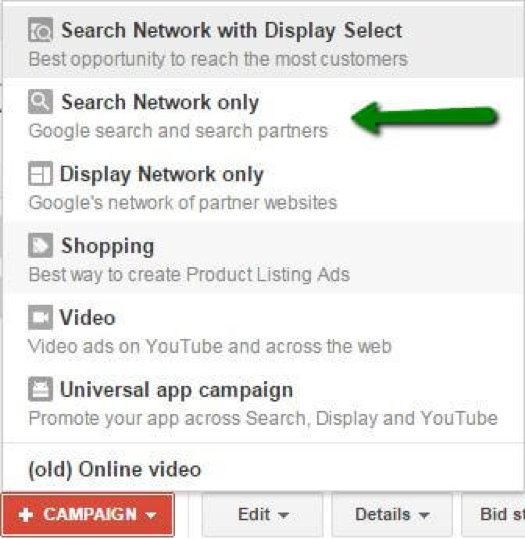
These settings also include target geographic locations, languages, device etc. You’ll learn more about the different ad networks shortly.
4. How to Optimize Your Quality Score
Now that you understand the importance of account structure, let’s look into some practical ways to improve your Quality Score.
As mentioned earlier, Quality Score is mostly measured by relevance. One way you can do this is by making your account structure more granular. In other words, creating specific ad groups for specific search queries.
Let’s say one of your top performing keywords is “men’s italian boots.” It generates a lot of sales but conversion rate and SERP ranking is low. In this case, it’s wise to create an entirely separate ad group that targets just this keyword. This will ensure a high relevance across each element of your campaign.
From here, you must optimize the ad copy for this target keyword. First, make sure that it contains the target keyword. This will immediately help you increase your click-through rate (CTR).
To optimize copy further, look at what the competition is doing and adjust accordingly:
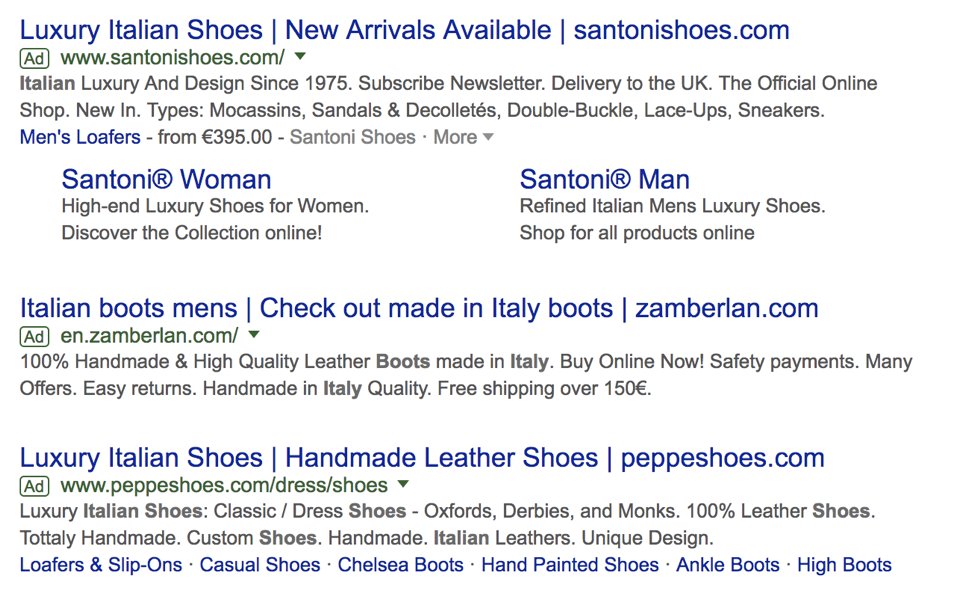
In the results above, the top result talks all about the brand, how long they’ve been in business, that they’re the “official shop” etc. Differentiate yourself by focusing on the product and the needs of the consumer. Again, you can uncover this information by conducting surveys and customer interviews.
From here, you can create hyper-specific landing pages for those queries. Taking our example from above, this might mean moving traffic from a page that offers your entire inventory of boots and directing it to a landing page offering Italian boots only.
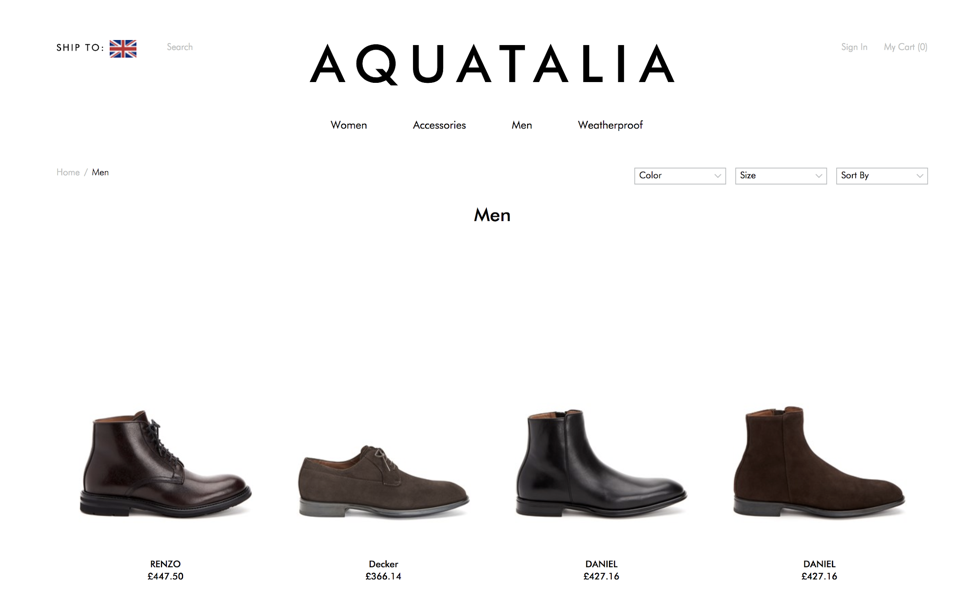
Finally, make sure your pages load fast. This has become a key factor in how Google ranks pages for organic search and will make a huge impact on your SEM campaigns, too.
5. Google Ad Types (And Which to Use)
Back in the day, Google Ads (then known as AdWords) offered advertisers plain text format which appeared in the SERPs. But things have since expanded, with the platform now offering a flexible array of ad types.
Here, we’ll outline each ad type and when you should use them, as well as examples from brands who do it well.
Google Search
Run a search for any keyword on Google and you’ll see this type of ad. They’re typically comprised of the following:
- Headlines
- Description
- URL
And appear in the SERPs like this:
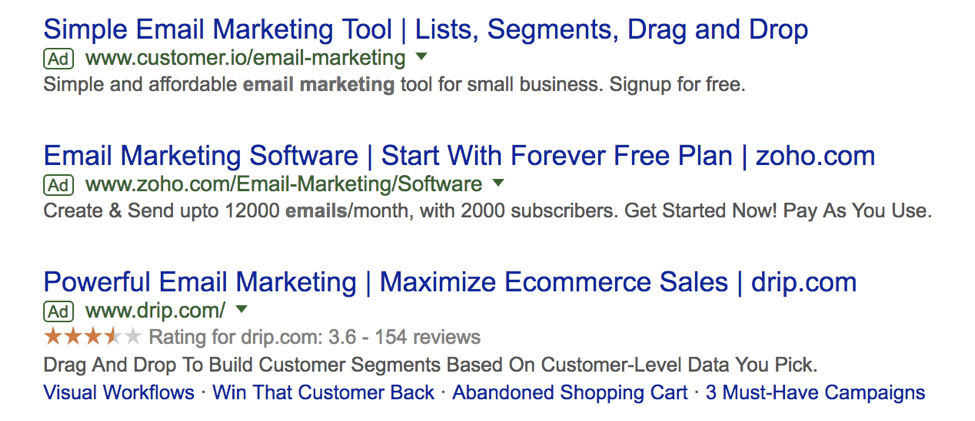
You can also include a number of ad extensions. These are essentially “add-ons” that provide extra functionality for the user. Ad extensions include:
- Sitelink Extensions: Include additional links relevant to your target keyword or offering.

- Location Extensions: Includes your address under the ad. Helps searchers find you with ease.

- Call Extensions: Allows searchers to call you directly from their device (especially useful when searching from mobile).

- Review Extensions: If you rely on social proof and have a “My Business” listing, this can help provide a boost of credibility for those searching for your products/services.

And so much more. The extension you use will depend on your goals. The best benefit? More SERP real estate. Your site extensions end up generating more attention, allowing you to boost your CTR.
Google Shopping
If you’re an eCommerce brand selling physical goods, Google Shopping is a great option. With this ad type, you can advertise every product from the SERPs itself:
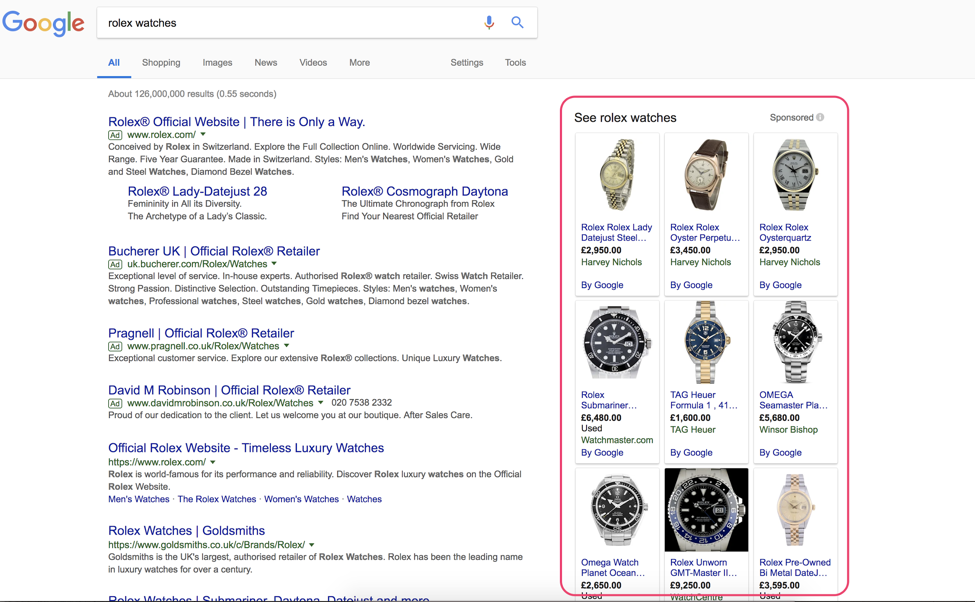
Getting your products featured here is a matter of uploading a feed of your products through the Google Ads platform. You’ll also appear on the Google Shopping platform itself, which lets users browse and compare different products and vendors:
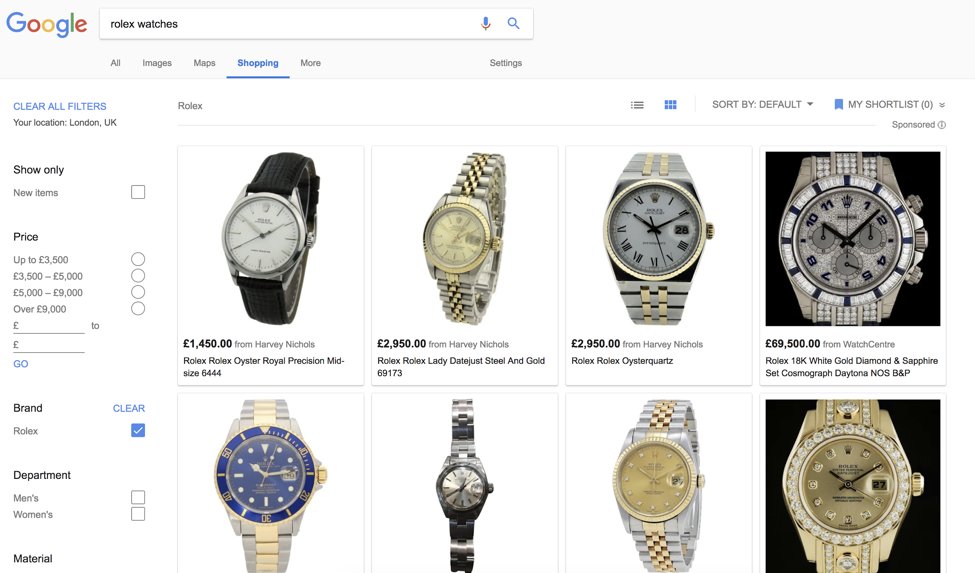
Display Ads
Using Google’s Display Network, you can serve image-based ads on thousands of sites across the web.
These ads come in several different formats, including:
- Text ads: Look similar to those that appear on the SERPs.
- Image ads: Visual and eye-catching. This is the format most marketers use when advertising through the display network.
- Rich media: Includes interactive elements and can include animation.
- Video ads: Similar to rich media, video appears in a similar manner to display ads and are often more eye-catching.
Below as an example of a display ad appearing on the Forbes home page:

Video Ads
When Google acquired YouTube, it opened up access to a whole new user base. The result? Google expanded their advertising capabilities to the platform, allowing SEM marketers to create video ads and attract a new audience.
At the time of writing, there are three types of YouTube video ads:
- TrueView In-Stream Ads: These appear before, during and after a user plays a video. It provides the option for users to skip after five seconds.
- TrueView Discovery Ads: These video ads appear in the YouTube search results, allowing advertisers to attract users to watch their ads by choice. Advertisers are only charged when these videos are viewed, and are considered the landing pages of the YouTube world.
- Bumper Ads: Similar to In-Stream ads, these appear before, during and after a video is played. But this time, they must be no more than six seconds and, as a result, cannot be skipped by the user.
If you’re looking to build a more personal connection with your audience, video ads are well worth testing.
Mobile Ads
With over 50% of searches now being made on mobile devices, the Google Ads platform (and advertisers alike) have had to adapt.
Mobile ads are slightly different to search ads, in that they provide different functionality. For example, call extensions allow searchers to click a button and automatically dial the number offered from the SERPs:
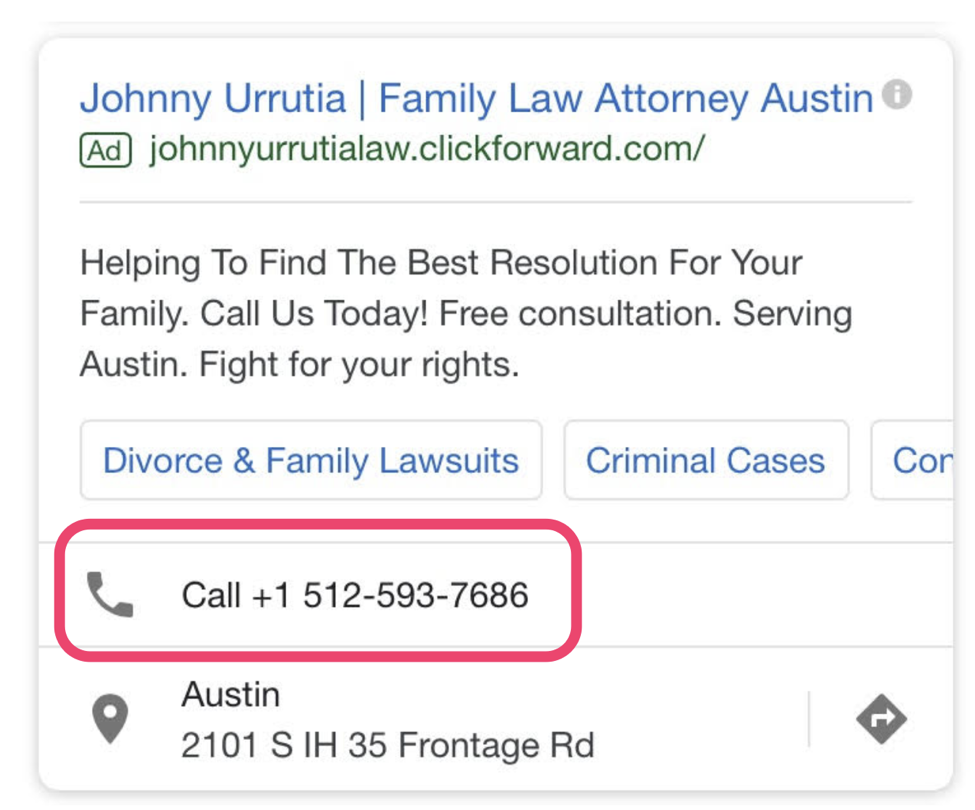
If a large portion of your audience are finding you through a mobile device, it’s well worth testing the effects that mobile ads have on your SEM efforts.
6. How to Measure SEM Performance
The best marketing campaigns, no matter what the channel, are carefully monitored. The right metrics are measured, and from this insight marketers optimize and pivot their approach.
SEM is no different. Every part of your PPC campaign must be carefully measured — from CTRs to landing page conversion rates. Insight can only be generated by measuring the right metrics. The following five metrics are the bare minimum to measuring the success of your SEM campaigns:
- Quality Score: As already covered, your Quality Score will determine your rankings in the SERPs and your overall spend. Keep an eye on this for all your ad groups and ensure you’re optimizing every stage of the SEM funnel.
- Click-through rate (CTR): Not only is this one of the biggest factors when determining Quality Score, but also shows how relevant your ads are. If you have a low CTR, it may be worth re-evaluating your account structure or ad copy.
- Conversion rate: How many people visit your SEM landing pages are becoming leads or customers? If you’re driving a lot of traffic but have a low conversion rate, it may be worth running experiments to optimize your landing page.
- Cost-per-acquisition (CPA): If you’re paying more to gain a customer than that customer is worth, then you’re generating a negative ROI. This is, ultimately, what makes-or-breaks a campaign.
- Wasted spend: How much of your ad budget is being wasted? This is the amount you’re spending on traffic that doesn’t convert. Using negative keywords is one of the fastest ways to reduce wasted spend.
To get the full picture of how your SEM campaigns are performing, link your Google Ads account to Google Analytics. This way, you can monitor on-page metrics and behaviors, such as conversion rates, bounce rates and avg. time on page.
Here’s how you integrate the two platforms:
- In Google Analytics, head to the Admin section and select “Google Ads Linking” under “Property.”
- Under “Select linked Google Ads accounts,” choose the account you wish to link.
- Under “Link configuration,” make sure you click “Select All” under the Links list.
- Toggle from “Off” to “On” next to the name of your Analytics account.
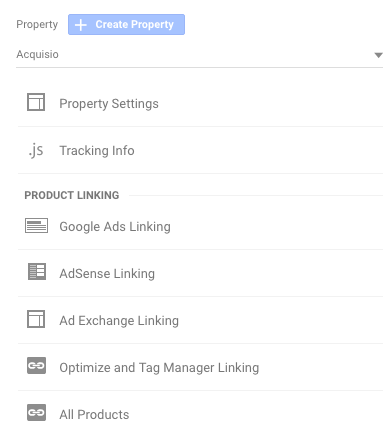
You now have a complete end-to-end view of your SEM marketing funnel.
Conclusion
SEM is one of the fastest ways to drive targeted traffic with a strong ROI. While it takes some time to optimize fully, the amount of feedback you get from your efforts is fast.
But there’s a right and wrong way to do it. If you get foundational elements wrong, such as account structure and an understanding of the buying process, you’re at risk of wasting that precious marketing budget.
Follow this process by understanding your customers first. Build a PPC funnel using relevant, high-performing landing pages and ad copy to attract your ideal customers and clients. This is how you generate new customers with a positive ROI.
Image Credits
Feature Image: Unsplash / Natalya Letunova
All screenshots by author. Taken August 2018 from Google or Google Ads.
Image 1: via Business2Community
Image 2: via Klientboost
Image 3: via Optmyzr
Image 4: via Search Engine Land
Image 5: via Aquatalia
Image 6: via Forbes



